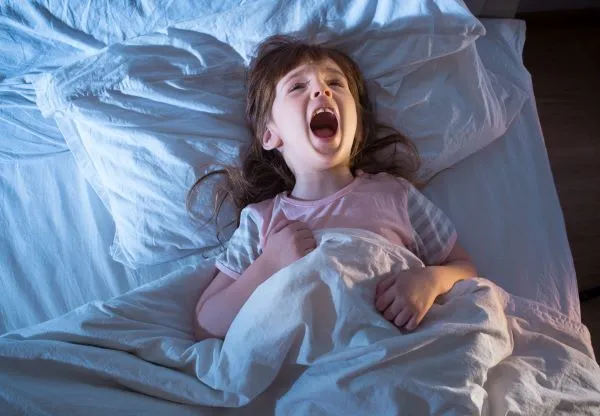Also: refresh your memory of the 2023 sleep apnea codes.
From simple nightmares to more serious issues such as apnea, there are all kinds of things that can disrupt a child’s sleep. Since a pediatrician is often the first person parents turn when their child can’t sleep, it’s likely you’ve encountered a variety of records that call for a variety of different codes.
If you could use a refresher, we’ve got you covered with this compilation of common codes you’re likely to come across for your easy reference. We’ve also added some great tips to help you use them accurately.
Know the Differences Between the Insomnia Codes
While not always a cause for real alarm or treatment, a child’s inability to sleep is important for doctors to monitor. Insomnia is a general term for a sleep disorder that involves difficulty falling asleep, staying asleep, or both, which results in inadequate quality or quantity of sleep. You will generally choose from either G47.0- (Insomnia) and F51.0- (Insomnia not due to a substance or known physiological condition). In the world of medical coding, however, not all insomnia is created equal.

For example, G47.0- is a code from Chapter 6: Disease of the Nervous System (G00-G99), whereas F51.0- comes from Chapter 5: Mental, Behavioral, and Neurodevelopmental disorders (F01-F99). When you consider the nature of each condition, that should point you in the direction of the most accurate code. Consider the following choices from each code family:
G47.0- codes: These codes are a sort of catch-all group for use when notes are vague or the condition hasn’t been too deeply explored.
Take a look at the extensive Excludes2 list. There are several specific types of insomnia for which payers will accept one of the general codes listed above. This proves that the conditions listed in the note are different, despite “insomnia” being in the name. See also the note under G47.01 which instructs you to code also the associated medical condition. This is not to be confused with the next code family, which includes insomnia that’s due to a mental disorder.
F51.0- codes: These codes include a variety of more specific codes that relate to mental conditions.
These also feature a sizable list of Excludes2 notes, indicating your ability to pair F51.0- with other types of insomnia, including G47.0-.
Turn to These Codes for Other Sleep Disturbances
If your pediatrician notes other types of sleep disturbances, such as nightmares, these conditions may or may not lead to insomnia. However, they still tell a valuable story and should be in the patient’s record:
Note: to report periodic nightmares, code either of the following, depending on the provider’s documentation:
Carefully Read the Notes Before Considering Colic Codes
Colic is a common pediatric condition affecting patients under 6 months of age that can lead to insomnia and sleep disturbances. When you look in the alphabetic index, you’ll first see R10.83 (Colic).
However, if the colic occurs in a patient over 12 months old, you’ll need to use a code such as R10.84 (Generalized abdominal pain), instead of R10.83, per the Excludes1 note mentioned by the colic code in the ICD-10. Another Excludes1 code worth mentioning, which is listed for all R10 codes, is N23 (Unspecified renal colic). While rare in infants, you’ll report N23 if your gastroenteritis documents stomach pain associated with this particular form of colic.
Select Specificity When Reporting Apnea Codes
Newborns can have a variety of types of apnea, and ICD-10 allows you to report apnea in children to the 5th character. That means that the greater the documented details, the better.
Condition refresh: Apnea is defined as the stoppage of respiratory airflow for at least 20 seconds.
Central apnea occurs when breathing stops due to poor or no muscle coordination.
Obstructive apnea occurs when breathing stops due to an obstruction in the airway.
Mixed apnea is an episode where central and obstructive forces are present.
Sleep apnea definitions are similar, but symptoms occur during sleep.
“Apnea is a symptom that has many possible etiologies,” explains Donna Walaszek, CCS-P, billing manager, credentialing/ coding specialist for Northampton Area Pediatrics LLP in Northampton, Massachusetts. This is why ICD-10 has assigned codes to several types of newborn apnea, in turn making P28.3- and P28.4- parent (non-billable) codes:
Note: Evaluations for some pediatric conditions, such as autism spectrum disorder, include workup of co-occurring conditions like sleep disorder. If such an evaluation were to determine that a patient’s apnea has its origin not in something like obesity, but rather in the perinatal period, no matter the age at which the evaluation is performed, you’ll report a P28- code. Section I.C.16.a.1 of the ICD-10 Guidelines directs coders that “Chapter 16 codes may be used throughout the life of the patient if the condition is still present.”
Remember You Can Bill an E/M Even if Patient Isn’t Present
Sometimes, sleep disturbances can be embarrassing, especially if the child is experiencing bed wetting, or enuresis, past when is considered the norm.

Consider a scenario where the parents of a 12-year-old patient present in the office to discuss their child’s bedwetting. The pediatrician spoke to them about the child’s condition and made a plan with the family. It is perfectly possible to bill for an appropriate level of office/outpatient evaluation and management (E/M) service in situations like this, such as 99212 (Office or other outpatient visit for the evaluation and management of an established patient, which requires a medically appropriate history and/or examination and straightforward medical decision making…).
That’s because CPT® defines total time for office/outpatient evaluation and management (E/M) services as including “counseling and educating the patient/family/caregiver.” Under this situation, family counseling without the patient would qualify.
Further, CPT®’s Counseling Guidelines state that “counseling is a discussion with a patient and/or family,” (emphasis added). The “or” here can be taken to mean that the patient does not have to be present.
Note: Some payers may interpret these guidelines differently and may insist that the patient be present during the encounter in order for you to be reimbursed for the office/ outpatient E/M service. So, you should verify a specific payer’s policy before billing.
